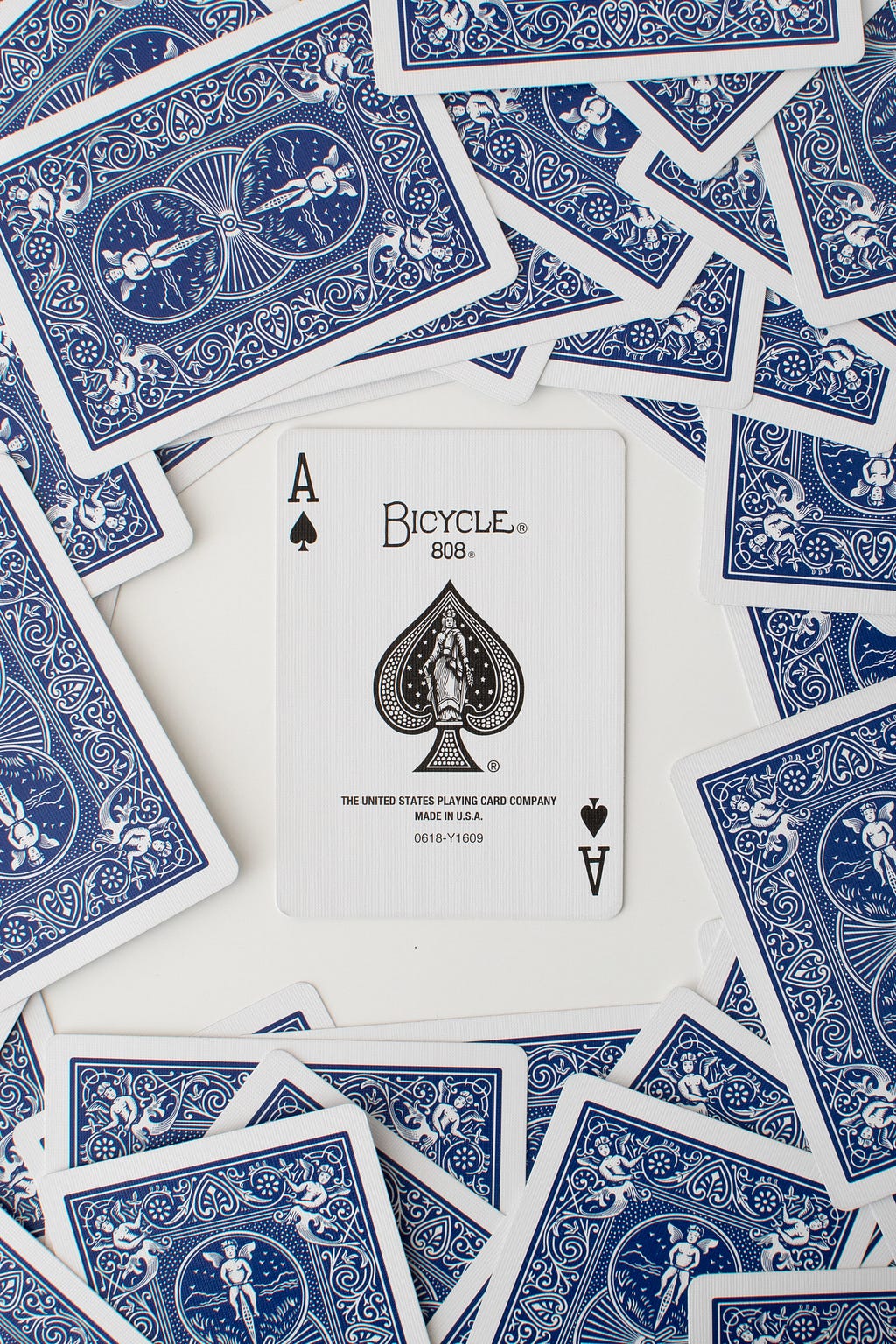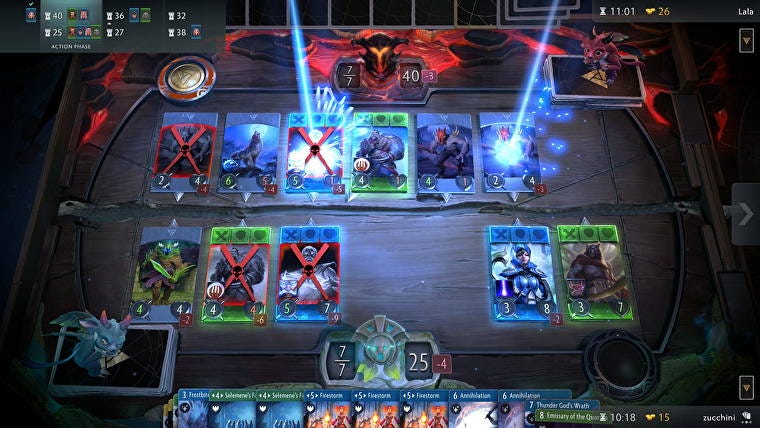Latest news about Bitcoin and all cryptocurrencies. Your daily crypto news habit.
 Photo by Maik Jonietz on Unsplash
Photo by Maik Jonietz on Unsplash
Hearthstone is the most popular card game in history. It’s more popular than Poker, and Magic the Gathering combined.
Hearthstone has made a staggering 395 million dollars in revenue and it’s the 4th most popular game to watch on Twitch.
Hearthstone is a video game and eSports juggernaut. Last semester, I played Hearthstone competitively for the University of Michigan’s colligate team and finished 20th in the country. Next year my college is considering recognizing the video game as a club sport.
Hearthstone attracted me to the game because of its simple rules, stunning artwork, competitive gameplay, cheapness to play, and fantastic community.
None of these factors are particularly new or innovative.
Magic the Gathering is a card game with stunning artwork and competitive gameplay. Pokemon TCG, Yu Gi Oh, and Poker have vibrant communities of players. Black Jack has a simple rule set that’s easy to pick up.
 Photo by Wayne Low on Unsplash
Photo by Wayne Low on Unsplash
Hearthstone is like the Apple of card games. They took the best ideas of all the card games before them, combined that with a beautiful design, and created a game with unparalleled UI/UX.
Which certainly contributed to its success, especially in the short term.
However in the long term, Hearthstone made one unique design decision which took the game from great to unprecedented.
Unlike other card games Hearthstone is a closed economy.
Before I played Hearthstone competitively, I played Yu Gi Oh competitively. The game wasn’t cheap. I would often spend $100+ to get my hands on the best deck of cards. But once I was bored playing the deck, I could re-sell those cards and get my money back.
Maybe I wouldn’t get the full $100 but I would often get back $60 or so. Sometimes I’d be able to sell the cards at a markup. Also I’d often win tournament money. So even though I put a lot of money into the game, I could alway get a big percentage of my money out of the game.
If I wanted, I could take my Yu Gi Oh money and gamble a bit at Poker, then go back to Yu Gi Oh for a while, then sell those cards, and play some Pokemon TCG, then sell those cards, and gamble some Black Jack, etc.
 Photo by Wayne Low on Unsplash
Photo by Wayne Low on Unsplash
Most card games are open economies — you can get your money out of the game and use it for different games or even groceries.
Hearthstone moved away from this model. Once you put money into Hearthstone it’s stuck in Hearthstone. Forever.
In Hearthstone you use money to buy packs, which awards cards. You can ‘disenchant’ those cards to give you ‘dust’ but you can only use dust to craft other Hearthstone cards. You can not use dust to get a refund on money.
And once players put money into Hearthstone, they’re highly incentivized to stick to Hearthstone. Once they have a massive collection of Hearthstone cards it feels as though they have an advantage in the game. It’s hard to justify leaving a collection behind to play a different card game.
Blizzard — the makers of Hearthstone — keep game statistics very close to their chest. It’s hard to find credible sources of data on the game. But lets put it this way: if we assume that every active player buys three “expansions” of cards. their collection is worth at least $150. It’s hard to leave that money sitting in Hearthstone to go play another card game.
This is the innovation that made Hearthstone huge. People don’t leave the game. There’s just too much incentive to keep playing.
A new, sexy card game is emerging on the horizon: Artifact.
It’s made by Valve —another amazing game developer studio which has proven itself as one of the leaders of the industry.
People are obviously comparing Artifact to Hearthstone. Some are calling it the Hearthstone-killer because Artifact has superior gameplay, more competitive potential, and a better stage for eSports. I’m not convinced any of those statements are true.
However even assuming they are true, the question people need to be asking is this: is Artifact such a superior game that Hearthstone players will be willing to throw away their entire collections of cards to start a new game?
 Photo by ammiel jr on Unsplash
Photo by ammiel jr on Unsplash
My prediction is some will. The vast majority wont. There have been plenty of other awesome card games that have come out since Hearthstone’s release such as Gwent, and Shadowverse. These games had objectively better gameplay than Hearthstone.
But they didn’t have the ability to overtake Hearthstone’s massive 395 million dollar closed-economy. Not even close.
In my mind, what’s even more concerning for Artifact’s longevity is its economy system. Artifact has a semi-closed economy. In Artifact, you can put money into the game, and then you can take that money out of the game to use as currency on the Steam Store.
The Steam Store is an online platform to buy other video games such as Portal and Team Fortress 2. Notably, the Steam Store is made by Valve.
The problem here is that Valve only earns 20% of the money put into games bought on the Steam Store. So if players take their money out of Artifact, Valve will not receive the full return.
This entails that it’s more expensive to play Artifact. Artifact requires players to pay an up-front cost of $20 whereas Hearthstone is free. Particular cards in Artifact will inevitably spike up to $50 or more just like Yu Gi Oh and Magic the Gathering whereas Hearthstone have a fixed cap of ~$10.
Still some players are commending Valve for making Artifact a semi-closed economy because it reminds them of their childhood card games.
It will be interesting to see how this economy stacks up with Hearthstone’s. If any company could accomplish a successful semi-closed economy, it would be Valve.
But in a world where Hearthstone’s behemoth closed-economy exists, making a card game thats even slightly open incentives players to leave and play a different game.
Which is downright dangerous if you want to claim the title of “Hearthstone killer.”
How Hearthstone’s Economy Bullied Other Card Games Out of Existence was originally published in Hacker Noon on Medium, where people are continuing the conversation by highlighting and responding to this story.
Disclaimer
The views and opinions expressed in this article are solely those of the authors and do not reflect the views of Bitcoin Insider. Every investment and trading move involves risk - this is especially true for cryptocurrencies given their volatility. We strongly advise our readers to conduct their own research when making a decision.
